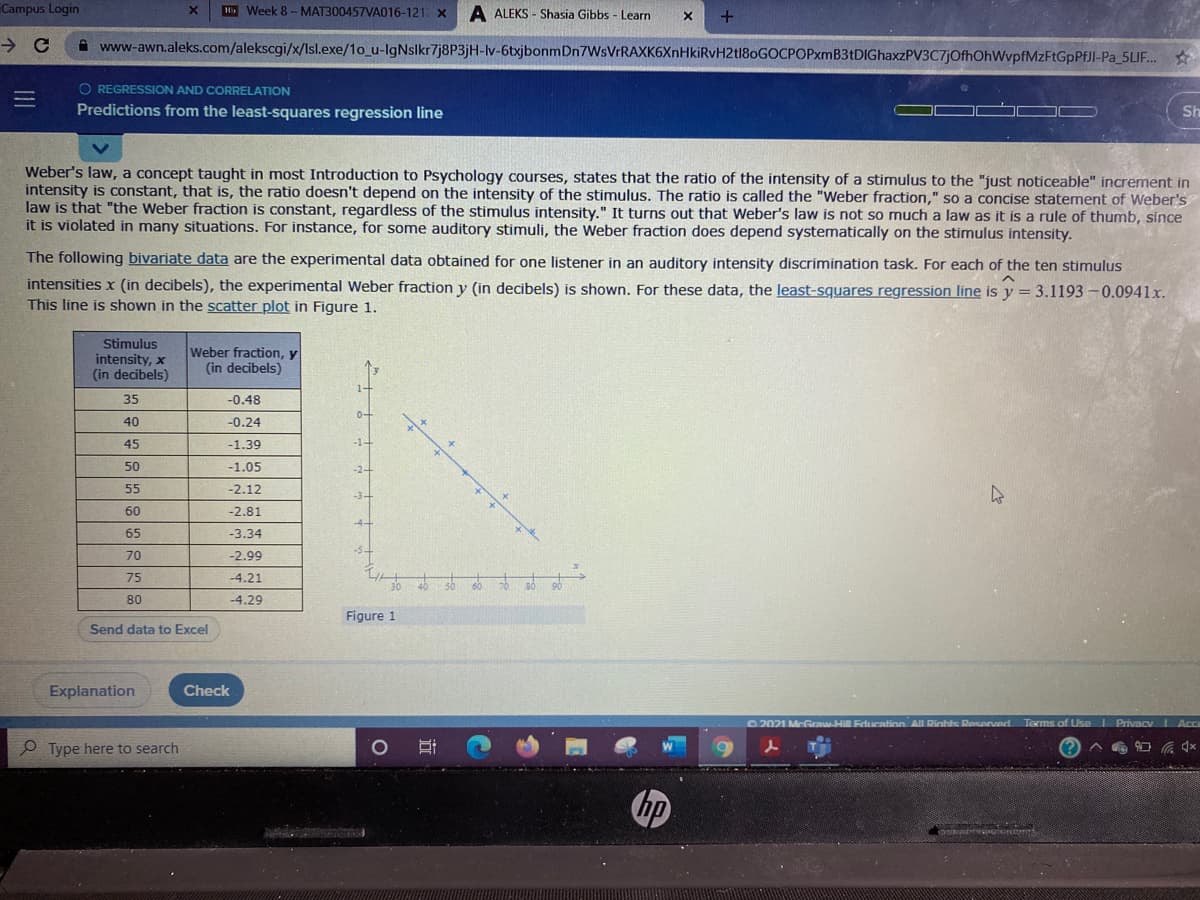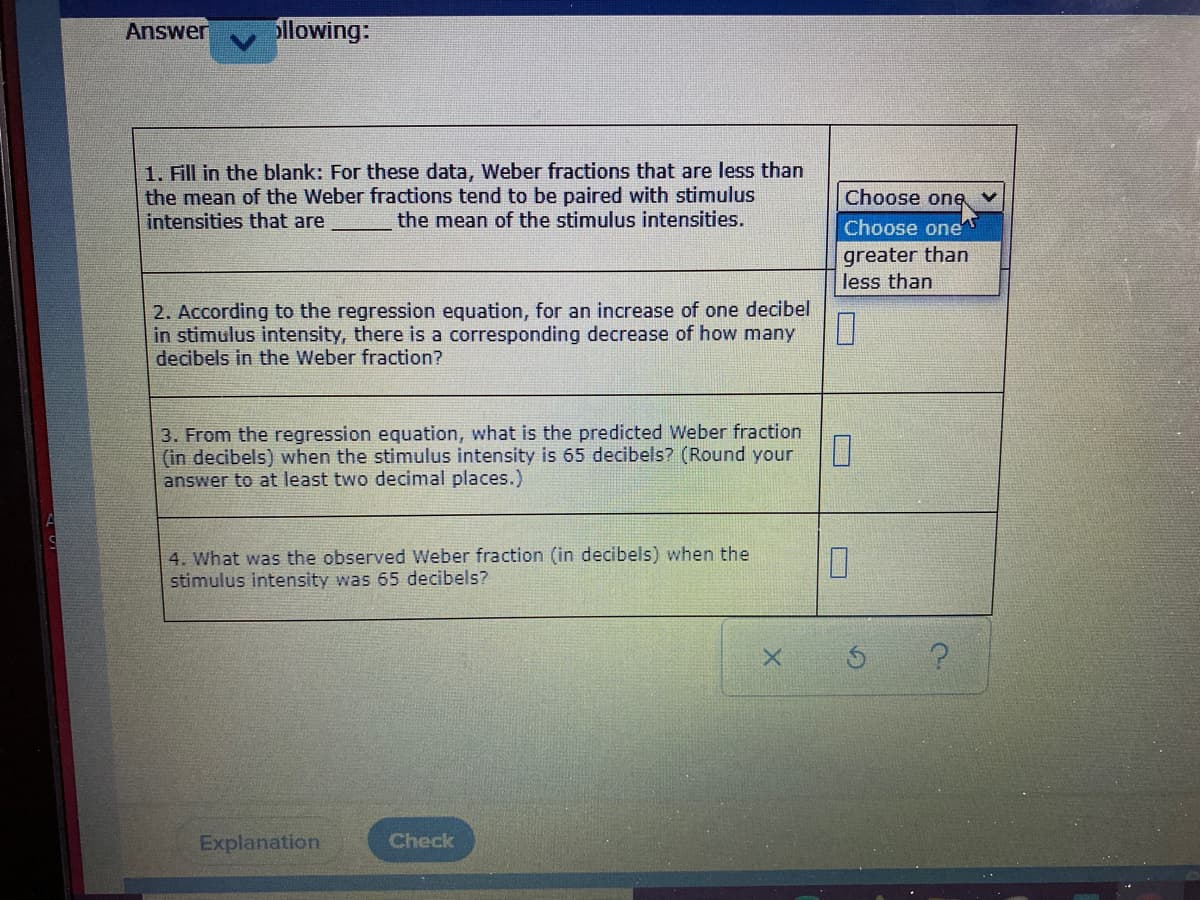1. Fill in the blank: For these data, Weber fractions that are less than the mean of the Weber fractions tend to be paired with stimulus intensities that are the mean of the stimulus intensities. 2. According to the regression equation, for an increase of one decibel in stimulus intensity, there is a corresponding decrease of how many decibels in the Weber fraction? 3. From the regression equation, what is the predicted Weber fraction (in decibels) when the stimulus intensity is 65 decibels? (Round your answer to at least two decimal places.) 4. What was the observed Weber fraction (in decibels) when the stimulus intensity was 65 decibels?
Correlation
Correlation defines a relationship between two independent variables. It tells the degree to which variables move in relation to each other. When two sets of data are related to each other, there is a correlation between them.
Linear Correlation
A correlation is used to determine the relationships between numerical and categorical variables. In other words, it is an indicator of how things are connected to one another. The correlation analysis is the study of how variables are related.
Regression Analysis
Regression analysis is a statistical method in which it estimates the relationship between a dependent variable and one or more independent variable. In simple terms dependent variable is called as outcome variable and independent variable is called as predictors. Regression analysis is one of the methods to find the trends in data. The independent variable used in Regression analysis is named Predictor variable. It offers data of an associated dependent variable regarding a particular outcome.


As per the Weber's law, we can draw the inference that Weber's fraction doesn't depends upon the intensity of stimulus.
When the experimental data was plotted, we got a straight line with negative slope (-0.0941) and a positive intercept.
Trending now
This is a popular solution!
Step by step
Solved in 5 steps


